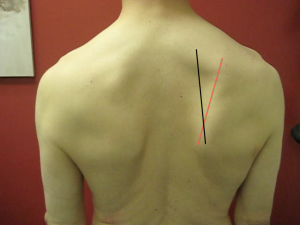
How Lower Body Exercises Can Impact Upper Body Function
A while back, I published a blog called Making the Case for Training in the Post-Surgery Period. In short, it discussed how we are almost always dealing with athletes who are training during their rehabilitation periods. In many cases, this is strictly working around the issues while they’re going through physical therapy.
In writing these programs, one recognizes that it’s actually far easier to write a program for a post-op lower body issue than it is for a post-op upper body scenario. Very simply, because most strength and conditioning exercise selections work “from the ground up,” there are many more ways that lower extremity exercises can impact upper body drills than vice versa. Today, I’ll outline some examples.
1. Grip work.
There is grip involvement in deadlifts, various dumbbell single-leg exercises, and even squatting exercises that require an athlete to grasp the bar. Particularly in the case of elbow issues, too much grip work can become a real problem. For example, in the 4-8 month period after Tommy John surgery, it’s not uncommon for athletes to experience discomfort in the common flexor tendon region – and it usually has to do with the cumulative stress of gripping during strength training and rehab work on top of the intensification of the throwing program. Some doctors have surgical approaches that are a bit “rougher” on the flexor tendon, too. In these scenarios, you’re best off working predominately with lower body drills that don’t involve a lot of grip work.
2. Front rack position with acromioclavicular (AC) joint issues.
When you want an AC joint issue to calm down, there are really three big rules:
a. Avoid reaching across the body (horizontal adduction, like a cross-body stretch)
b. Avoid reaching behind the body (full extension, like in a dip)
c. Avoid direct pressure to the area (particularly because it has very little muscle mass to cushion it)

With respect to “C,” the front squat set-up is an absolute no-no. The pressure on the bar across the shoulder girdle can really take an upset AC joint and make it markedly worse. And, since this is in many cases an injury that we’re just “waiting out,” simply training through it will only makes things worse long-term.

Therefore, deadlift variations, single-leg variations, and back squats (assuming no other related problems) are likely better bets. That said, we generally use the safety squat bar and giant cambered bar exclusively with those who present with AC joint problems.
3. Back squat position with internal impingement.
Internal impingement (also known as posterosuperior impingement) is a broad diagnosis most common in overhead throwing athletes. In the late cocking phase of throwing (or swimming, tennis, etc.) – which involves external rotation and abduction – the humeral head tends to translate superiorly (up) and anteriorly (forward) relative to the scapula.
These issues are magnified by poor scapular control, weakness of the rotator cuff, insufficient thoracic mobility, loss of tissue extensibility around the shoulder girdle, and in some cases, structural changes. The end result is that the biceps tendon, labrum, rotator cuff, glenohumeral ligaments, or nerves that pass the anterior aspect of the shoulder get irritated. The term “internal impingement” really just explains the pain-provoking position, not the specific diagnosis. Generally speaking, the pain is purely mechanical in nature; it won’t bother an athlete unless the “apprehension” position (full external rotation at 90+ degrees of abduction) is created.
Just about every overhead athlete is constantly “flirting” with internal impingement problems, so my feeling is that it’s best to just avoid this “at-risk” position in the weight room – and that’s why we don’t back squat any of our overhead throwing athletes. And, we certainly wouldn’t use a back squat with anyone with symptomatic internal impingement.

4. Giant cambered bar with scapular anterior tilt, humeral anterior glide, and forward head posture.
The giant cambered bar is an awesome option for avoiding the “at-risk” abducted, externally rotated position that often gives overhead athletes problems, but it can create a problem with athletes who are prone to scapular anterior tilt, humeral anterior glide, and/or forward head posture. Because of the positioning of the hands, the elbows are driven a bit behind the body, which can cause the shoulder blade to dump forward and “ball” to glide forward on the socket. You may also see the head shoot forward.
That said, these faults can be easily minimized with good cueing. However, I wouldn’t recommend using this bar with an athlete who has a big predisposition toward any of the three issues.
5. Scapular depression from holding heavy weights in the hands.
The deadlift can be an awesome exercise for improving poor posture – but not in all cases. Specifically, whenever we have an athlete who sits in too much scapular depression and downward rotation (more info on that HERE), we’ll avoid holding really heavy weights in the hands for lower body training.
Our goal is to teach the shoulder blades to sit a little higher at rest, and functionally get higher when the arms need to go overhead. We don’t want all our lower body work competing against that. During this time period, it’s best to go with squatting variations, barbell supine bridges/hip thrusts, DB/KB goblet set-ups, sled work, the front squat grip, glute-ham raises, and anything else your imagination yields – as long as it doesn’t tug the shoulder blades down.
There are many more considerations for how lower body work impacts upper body function, but these are definitely the five I most frequently encounter that you should keep in mind. If you’re interested in learning more, I’d encourage you to check out my popular resource, Sturdy Shoulder Solutions.






